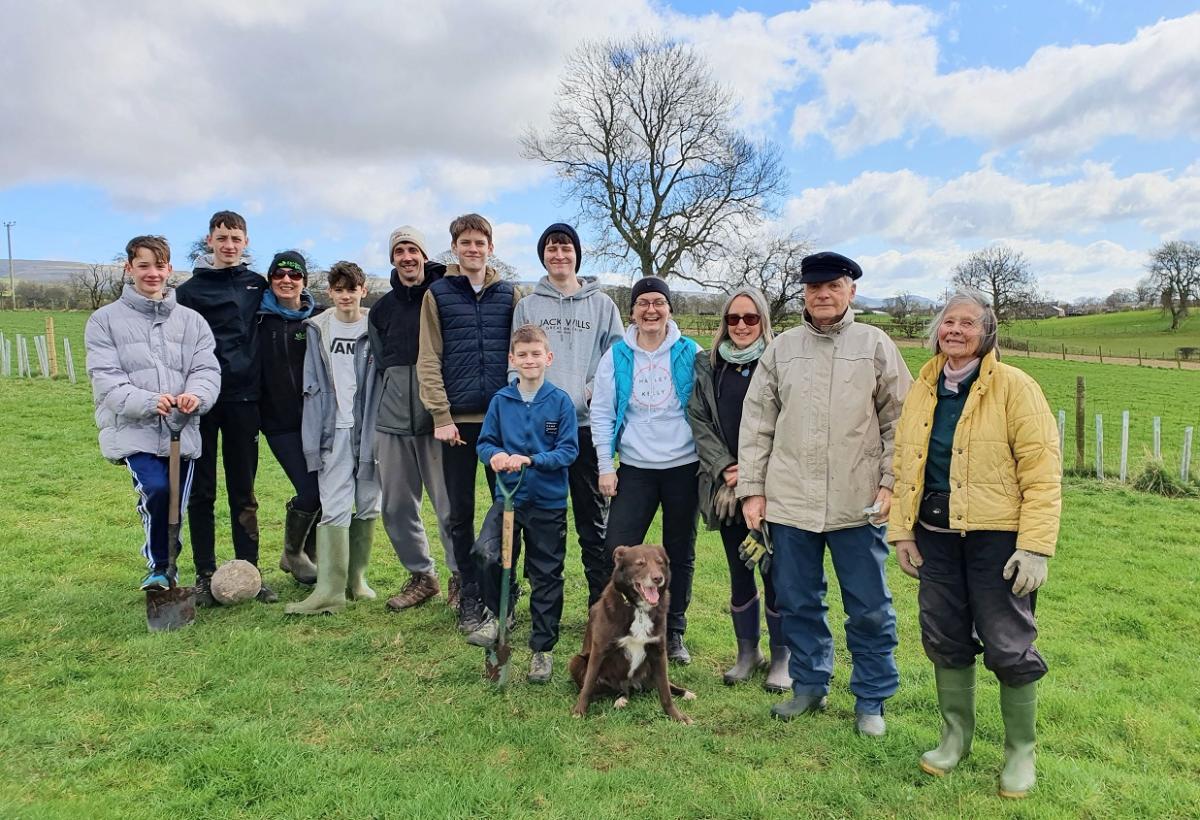
A couple of weekends ago I was talking about attracting wildlife to new build gardens at PACT’s tool and seed swap day. Collecting information through a variety of sources, a neighbour mentioned that at Knepp Estate, Isabella Tree said their squadrons of goldfinches came back when they let the blackthorn grow. Birds love thickets for food and shelter. Here in my urban garden the bluetits haven’t come back to nest yet. I’ve seen them but due to an unfortunate accident they are nesting in the now overgrown privet next door. The owner fell off a ladder so can’t cut back the hedge. His terrible misfortune has created a natural nesting site, previously unavailable, which is far superior to my bird box.
We think we are caring when we make things super neat, cutting them back and then we wonder why birds don’t nest. We plant ornamentals and wonder why bees are struggling. These are sweeping statements as more factors are in play, but we need to let ourselves go a bit and be messy. We need to relax.
We’re at the field and have gone over the 2000 trees mark by quite a way. The spring sun is blazing down, the wind barely blowing, and we’re working away. Over 20 people have been planting trees together over the last few weeks and months. From 8 to 78, and on one day three generations from one family. Siblings, friends, new and old have gathered together to make this all happen. From that dreary January day of all these trees, guards and poles arriving, feeling incredibly overwhelmed and daunted to this. We are doing it, we did it. We turned up and planted and changed a landscape, together, by hand and laughter. Sometimes all you need to do is turn up to make a difference.
The advice was plant them in a mix. But what I know about these trees is – hawthorn grows fast, like hazel, but they grow differently. Hawthorn shoots up with its spikes but creates a thicket. Hazel shoots up but it’s great if every few years it’s coppiced down to the ground. Some like bird cherry, crab apple and field maple grow big. Others like dog rose, climb. Spindle and alder buckthorn are pretty rare now. Each is a host to a load of creatures from larvae to birds. So I decided to separate the mix, to create blocks in some stretches. The hawthorn is mainly used as a windbreak to the north-east; the spindle and alder buckthorn make a berry hedge in the southern stretches; the hazel is a coppice laid in a circle to create a sheltered meeting place. The trees that can be larger have been planted to let them grow. This is just the start, over the next few years we’ll add in more varieties when it becomes more shelter. Wild pear, cherry plum, elderberry, and apple. All delicious and what drinks we will make.
And after the day, each day, I think ‘...and maybe we’ll just let them all grow and sort themselves out’. The more I observe, the more the natural word thrives if we interfere less. And then a bee buzzes passed, interrupting my thoughts and I feel happy, at hearing the bee, and a pang of distress, as I look around and seeing nothing for the bee. No water, or flowers or fruiting bodies, just grass, a few bare mature trees and a load of young ones in tubes. So the next project is, wild flowers, and more buckthorn, which is flowering now.
At the end of each tree planting day, when all the planters have left, I lie on my back on the grass, and watch the clouds drift by, listening. To the rooks squabbling and cooing in the mature trees down the road, to the wind, to nothing but soundless sound which stretches out like we do. It’s a real privilege to be surrounded by space and peace and quiet. No noise of busyness, cars or people. My eyes catch a silver movement high high above in the highest clouds. Geese, flying so high, back to their wintery lands more North as the spring walks slowly in.

